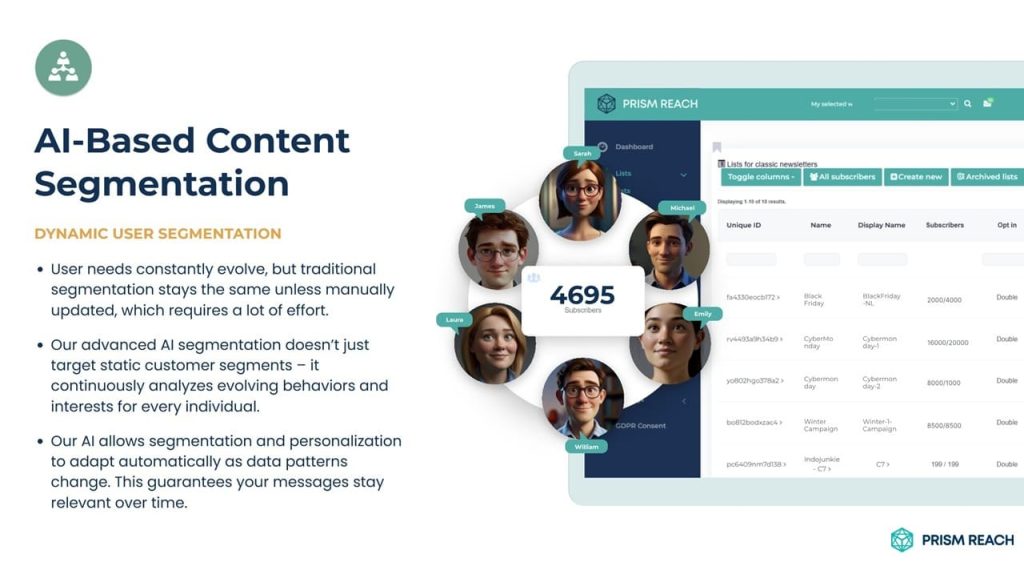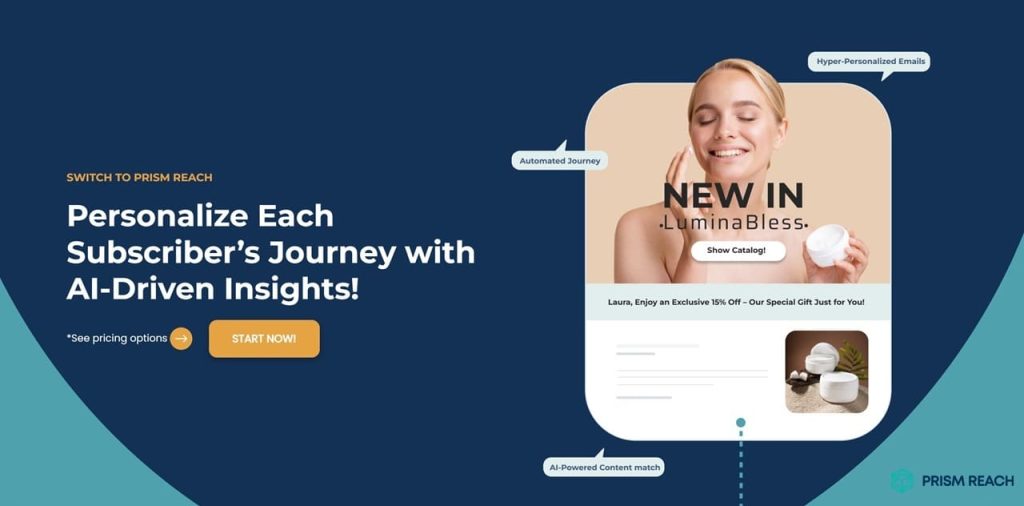In today’s digital landscape, email marketing remains a cornerstone of effective customer engagement and business growth. However, the true power of email campaigns lies not just in their execution but in the wealth of data they generate. As we navigate an increasingly data-centric marketing world, the ability to analyze email marketing data has become a critical skill for marketers and businesses alike.
The importance of email marketing analytics has been further amplified by recent industry trends. With the rise of AI-powered tools and the increasing emphasis on personalization, marketers are now equipped with unprecedented capabilities to dissect campaign performance and tailor strategies to individual preferences. This shift towards data-driven decision-making is not just a trend but a fundamental change in how we approach email marketing effectiveness.
Key Facts
- Effective email marketing data analysis can lead to a 40% increase in engagement rates, demonstrating the critical role of data in campaign optimization.
- According to a recent study, 77% of marketers have seen an increase in email engagement over the last 12 months, highlighting the growing importance of email as a marketing channel.
- Personalized email campaigns based on data analysis can result in a 6x higher transaction rate compared to generic email blasts.
- The global email marketing market is expected to grow to $17.9 billion by 2027, underscoring its growing significance in business strategies.
- AI-powered tools like Prism Reach can boost engagement rates by up to 40% through enhanced personalization and data-driven insights.

Navigating the Data Landscape: Essential Metrics and Analysis Techniques
To truly harness the power of email marketing data, marketers must focus on a comprehensive set of metrics and employ sophisticated analysis techniques. The process begins with defining clear objectives, as emphasized by marketing expert Sarah Johnson: “Without clear goals, you’re just collecting data for the sake of it. Every metric you track should tie back to a specific business objective.” This approach ensures that data collection and analysis are purposeful and aligned with overall business strategies.
Key Metrics for Email Marketing Success
Key metrics to monitor include:
- Open Rates: The percentage of recipients who open your emails. This metric indicates the effectiveness of your subject lines and the overall interest of your audience.
- Click-Through Rates (CTR): The percentage of recipients who click on links within your emails. CTR measures the engagement level and the relevance of your content.
- Conversion Rates: The percentage of recipients who take a desired action after clicking through, such as making a purchase or signing up for a webinar. This metric directly ties email performance to business goals.
- Bounce Rates: The percentage of emails that could not be delivered. High bounce rates can indicate issues with your email list quality.
- Unsubscribe Rates: The percentage of recipients who opt out of your email list after receiving a campaign. Monitoring this helps assess content relevancy and frequency.
Advanced Analysis Techniques for Deep Insights
Beyond basic metrics, advanced analysis techniques provide deeper insights into customer behavior and campaign performance:
Cohort Analysis
Group subscribers based on shared characteristics (e.g., sign-up date or first purchase month) to track their behavior over time. This allows you to identify trends in customer lifetime value and assess the long-term impact of specific campaigns or strategies, enabling better-targeted future efforts.
Predictive Analytics
Implement machine learning algorithms to forecast future customer behaviors, such as predicting churn or identifying potential conversions. This proactive approach allows you to tailor your campaigns based on anticipated actions, enhancing engagement and retention.
Email Heatmaps
Use heatmaps to visualize where recipients are clicking within your emails. This insight helps optimize layout and content placement, ensuring that critical links and calls-to-action are positioned for maximum visibility and engagement.
Continuous Improvement Through A/B Testing
A/B testing remains a crucial tool in the email marketer’s arsenal. This systematic approach to testing different elements of emails – from subject lines to call-to-action buttons – allows marketers to continually refine their approach based on hard data rather than assumptions.
Benefits of A/B testing include:
- Identifying Effective Elements: Determine which subject lines, designs, or content types resonate most with your audience.
- Optimizing Campaign Performance: Use test results to implement the most effective strategies across your campaigns.
- Reducing Wasted Spend: Allocate resources to tactics that have proven to work, minimizing investments in ineffective strategies.
Integrating Email Data with Broader Customer Insights
It’s vital to look beyond traditional email metrics to gain a comprehensive understanding of campaign performance. Integrating email data with broader customer data, such as website behavior or purchase history, can provide a more holistic view of the customer journey. This integrated approach allows for more sophisticated segmentation and personalization strategies.
Benefits of integrating email data with broader customer insights include:
- Enhanced Segmentation: Create highly targeted segments based on comprehensive customer profiles.
- Improved Personalization: Tailor email content more precisely to individual subscriber preferences and behaviors.
- Comprehensive Campaign Analysis: Understand how email campaigns interact with other marketing channels to drive conversions.
Integrating Hidden Gem Strategies
To elevate your email marketing data analysis efforts, integrating lesser-known but highly effective strategies can make a significant impact. Here are five hidden gem strategies that can transform your email marketing approach:
1. Cohort Analysis
Cohort analysis involves grouping subscribers based on shared characteristics, such as sign-up date or first purchase month, to track their behavior over time. This strategy helps identify trends in customer lifetime value and assess the long-term impact of specific campaigns or strategies.
- Identify Trends: Understand how different cohorts behave and respond to campaigns.
- Optimize Campaigns: Tailor future efforts based on cohort performance.
- Enhance Targeting: Deliver more relevant content to each cohort.
2. Predictive Analytics
Predictive analytics uses machine learning algorithms to forecast future customer behaviors, such as predicting churn or identifying potential conversions. This proactive approach allows you to tailor your campaigns based on anticipated actions, enhancing engagement and retention.
- Forecast Behaviors: Anticipate customer actions to inform campaign strategies.
- Reduce Churn: Identify at-risk subscribers and implement retention tactics.
- Boost Conversions: Target potential converters with personalized offers.
3. Email Heatmaps
Email heatmaps visualize where recipients are clicking within your emails, providing insights into content placement and user engagement. This tool helps optimize the layout and design of your emails to ensure that critical links and calls-to-action receive maximum visibility.
- Optimize Layout: Position key elements where users are most likely to engage.
- Enhance User Experience: Make your emails more intuitive and user-friendly.
- Increase Engagement: Ensure important links and CTAs are prominently placed.
4. Attribution Modeling
Attribution modeling involves applying multi-touch attribution models to understand how different emails contribute to overall conversions. This approach helps allocate resources more effectively by identifying which emails are crucial in the customer journey.
- Understand Impact: Determine the role each email plays in driving conversions.
- Optimize Resource Allocation: Invest more in high-performing emails.
- Enhance Campaign Strategy: Refine your email sequences based on attribution insights.
5. Behavioral Segmentation
Behavioral segmentation analyzes user behavior, such as purchase history and browsing patterns, to create segments that allow for highly personalized campaigns. Targeting users who abandoned their carts with tailored messages can significantly increase conversion rates.
- Increase Relevance: Deliver content that aligns with user behavior and preferences.
- Boost Conversions: Targeted messages lead to higher conversion rates.
- Improve Retention: Engage users with relevant offers and content.
Practical Tips for Effective Email Marketing Data Analysis
To maximize the benefits of email marketing data analysis for your business, consider the following practical tips:
1. Leverage Personalization
- Use data to tailor email content to individual preferences and behaviors.
- Implement dynamic content blocks to customize sections of your emails based on user data.
- Utilize tools like Prism Reach to automate and enhance personalization efforts.

2. Incorporate Interactive Elements
- Add quizzes, polls, or surveys to engage recipients and gather valuable feedback.
- Use interactive content to make your emails more engaging and memorable.
- Analyze responses to better understand your audience’s preferences and interests.
3. Implement Hidden Gem Strategies
- Integrate cohort analysis to track subscriber behavior over time.
- Utilize predictive analytics to anticipate subscriber actions and tailor campaigns accordingly.
- Employ attribution modeling to understand the impact of each email on conversions.
Enhancing Email Marketing Strategies with Prism Reach
Integrating Prism Reach into your email marketing strategy can significantly enhance your data analysis and campaign effectiveness. Here are three specific places where screenshots of Prism Reach can be particularly helpful:/

- Behavioral Segmentation Dashboard: Visual representation of how Prism Reach segments your audience based on behavior and preferences.
- Predictive Analytics Interface: Showcasing the tools used to forecast subscriber actions and optimize campaign strategies.
- Email Heatmap Visualization: Demonstrating how Prism Reach’s heatmap tool helps in optimizing email layout and content placement.
Benefits of Prism Reach
- Enhanced Personalization: Prism Reach’s AI-driven user avatars and content clustering provide deep personalization, ensuring each email resonates with individual subscribers.
- Accurate Attribution: The platform’s machine learning capabilities enable precise attribution, identifying which email touchpoints are driving conversions and optimizing accordingly.
- Unified Data Insights: Prism Reach’s unified dashboard consolidates attribution data from all channels, offering a comprehensive view of campaign performance and facilitating informed decision-making.
User Journey
The typical user journey with Prism Reach involves a streamlined process where subscribers sign up through a customized form, select their interests, and then receive personalized newsletters that cater specifically to their preferences. This journey not only enhances user satisfaction but also boosts the likelihood of long-term subscriber retention.
Compliance and Data Privacy
Prism Reach emphasizes GDPR compliance and hosts data within Europe, adhering to the highest standards of data protection. This focus on privacy is crucial for building trust with users and complying with international regulations.
Future Prospects
Looking ahead, Prism Reach aims to expand its technology into the eCommerce sector and explore new ways to leverage AI for broader marketing applications. The company is committed to continuous improvement of its AI algorithms, ensuring that its solutions remain at the cutting edge of technology and marketing innovation.
Upgrade Your Email Marketing with AI Personalization!
Conclusion
Analyzing email marketing data is no longer optional – it’s a necessity for any business looking to thrive in the digital age. By focusing on key metrics, employing advanced analysis techniques, and leveraging cutting-edge tools like Prism Reach, marketers can gain unprecedented insights into their audience’s behavior and preferences.
The future of email marketing lies in data-driven personalization and predictive analytics. As we continue to navigate this data-rich landscape, the businesses that succeed will be those that not only collect data but derive actionable insights from it. With the right approach and tools, email marketing data analysis can transform your campaigns from good to exceptional, driving engagement, conversions, and ultimately, business growth.
By integrating hidden gem strategies such as cohort analysis, predictive analytics, email heatmaps, attribution modeling, and behavioral segmentation, and utilizing advanced tools like Prism Reach, businesses can ensure their email marketing efforts are both effective and cost-efficient. Embracing these data-driven strategies will enable your business to stay ahead in an ever-changing digital landscape, fostering stronger customer relationships and driving sustained growth.
Citations
- Timetoreply. (n.d.). Email Marketing Data Analysis.
- Email Audit Engine. (n.d.). Advanced Email Marketing Techniques.
- Microsoft Dynamics 365. (2024, December 2). Optimize Your Email Marketing with Advanced Analytics Features.
- GetResponse. (n.d.). 8 Advanced Email Marketing Techniques You Can’t Miss.
- Narrative BI. (n.d.). How to Analyze Email Marketing Data.